All 4 of these wind turbines are falling in sequence. It’s a screenshot from a great video by demolition contractor The Loizeaux Group showing a collage of their deliberate implosions of wind towers that needed to be removed
After writing last week about the destructive practices of mining for rare earth elements needed for wind turbines, and the deadly destruction of wildlife, I ran out of time before getting to the other hazards.
I’m short of time again this week, so will just hit a few issues without trying to cover the whole gamut. Some of the points are from an earlier post.
Thomas Shepstone shared a post from ‘MGUY Australia’ on the absurdity of pursuing building new wind farms. They are built way out in the middle of nowhere, creating the need for miles of access roads and miles of high voltage distribution lines and towers. In his presentation on Youtube, MGUY showed one of those giant wind turbine parts that got stuck under a bridge.
It takes a special truck to handle one of these turbine blades.
for scale, notice the man, lower right
The blades made at LM Wind Power's Cherbourg plant are 107 meters long (351 feet) — and measure some 5.4 meters (almost 18 feet) in diameter at their wide end. Images credit: GE Renewable Energy/LM Wind Power. They weigh about 55 tons, and there are 3 of them on each tower. The towers are 984 feet high and weigh 2,550 tons. (That figure probably includes the concrete footing - not sure.) The 12 MW (megawatt) generator and gearbox and cover weigh 600 tons. Imagine transporting such equipment from factory to dock to barge, and then having big enough cranes to hoist all of it up into position. Quite a challenge, and not cheap.
But the difficulty of transporting wind turbine parts on existing highway systems is not the biggest hazard.
Security is a concern. Wind farms send their collectively generated electricity to land by undersea cables, which could be vulnerable to sabotage…
In addition, the Block Island offshore wind farm, a 30-megawatt facility off the coast of Rhode Island, found that its high voltage cables that carry electricity to land were not buried deep enough and were being exposed as the seabed was being worn away by tides and storms, making the exposed cables dangerous to swimmers.
fire
The turbine generators require maintenance every 6 to 12 months and a schedule for changing the 1400 liters of lubricating oils, hydraulic fluid, and gear oil for all the gears and bearings and yaw and drive mechanisms.
Sometimes the oil leaks. When oil leaks happen, they can cause a lot of environmental damage. Oil can contaminate farmlands and forests, and becomes particularly problematic when it spreads into groundwater or worse into the sea from offshore turbines.
Sometimes they catch on fire, and they’re hard to put out because of the tower height and all the oil, so usually they are just allowed to burn themselves out, but flaming debris falling 500’ to the ground of course can start an even larger fire disaster.
notice the blazing debris thrown out a considerable distance before falling to the ground - may have been an explosion
From windsystems
“A wind-turbine fire can cost upwards of $8 million, according to insurance experts quoted in Firetrace’s recent report, “Reducing Fire Risk.” As most wind-turbine towers exceed 250 feet, they are often out-of-range for ground-based firefighting. Sending a team up to fight the fire presents a significant health and safety risk. Therefore, if no fire suppression system is in place, it will be left to burn out, irreparably damaging the turbine… Fire risk is not only a concern for the wind farm’s balance sheet. A wind-turbine fire can spread to the surrounding environment, sparking wildfires and potentially spreading into nearby communities…”
falling over
“From Popular Mechanics
The taller the wind turbine, the harder they fall. And they sure are falling.
Wind turbine failures are on the uptick, from Oklahoma to Sweden and Colorado to Germany, with all three of the major manufacturers admitting that the race to create bigger turbines has invited manufacturing issues, according to a report from Bloomberg.
Multiple turbines that are taller than 750 feet are collapsing across the world, with the tallest—784 feet in stature—falling in Germany in September 2021. To put it in perspective, those turbines are taller than both the Space Needle in Seattle and the Washington Monument in Washington, D.C. Even smaller turbines that recently took a tumble in Oklahoma, Wisconsin, Wales, and Colorado were about the height of the Statue of Liberty.”
oregonlive.com Jan 17 ’23, reported by Ted Sickinger, the Oregonian
“PGE temporarily shuttered its Biglow Canyon wind farm last year after a massive blade from one of its towering turbines broke loose, launching the length of a football field and landing in a wheat field where workers had been delivering fertilizer hours earlier… The 135-foot piece of fiberglass, wood and metal weighs more than seven tons…
Industry research suggests that damaged blade bolts due to stress and metal fatigue is a frequent cause of turbine failure.”
We all heard the big news story about the turbine blade that crumbled off a wind turbine off the coast of Nantucket in July 2024. The fiberglass and foam debris from a failed Vineyard Wind turbine blade washed up on Nantucket beaches. The blade, part of the Vineyard Wind offshore wind project, broke and folded over while undergoing testing, causing debris to scatter into the ocean and then wash ashore. Nantucket Magazine reports that the incident left more than 6 cubic yards of foam and roughly 1.5 cubic yards of fiberglass on Nantucket beaches. CBS News reports that development of the wind farm has since been halted by the federal government.
backup batteries
photo is a screenshot from video about the Scatter Wash Battery Storage Project in Phoenix, Arizona, featuring innovative Tesla Megapack technology
Because of the unreliability of wind, wind turbine installations need the addition of multiple 20 ton container size backup battery assemblies. (Last week’s post mentioned the toxic mining of rare earth minerals needed for the special magnets in wind turbine generators. When the rare earth minerals for the backup batteries are added to those used in the turbines and generators themselves, onshore wind farms require eight times the amount of critical minerals as natural gas power plants do and offshore wind farms require 13 times as much.)
But the hazard is fire and explosion. When one of these babies catches fire or explodes and burns, they’re so hot, it’s almost impossible to put the fire out, and the fumes are toxic. The Moss Landing fire in Califiornia, January 2025 was uncontrollable.
from batterytech.com
“Initial air quality assessments by the U.S. Environmental Protection Agency (EPA) detected hydrogen fluoride and other combustion byproducts but concluded they did not pose immediate health risks. However, local officials remain concerned about the effects of long-term exposure, especially since past battery fires have been linked to the release of heavy metals.”
Coast Guard hazard
Offshore wind turbines can interfere with Coast Guard radar systems, potentially impacting search and rescue operations, navigation, and even vessel safety. The rotating blades and large structures of wind turbines reflect radar signals, causing clutter and obscuring the radar view, particularly for smaller vessels and stationary objects like buoys. This can also be a national defense security risk.


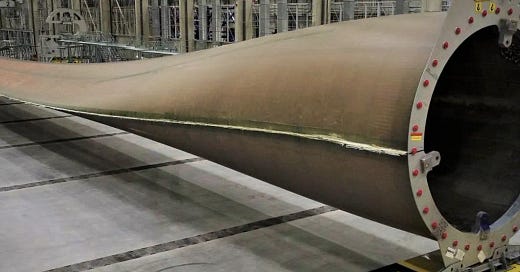



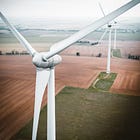


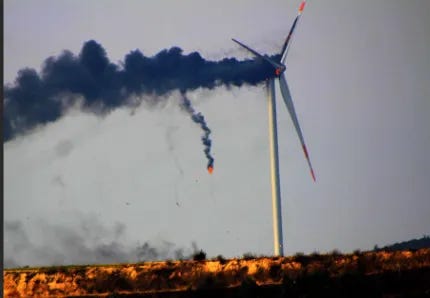
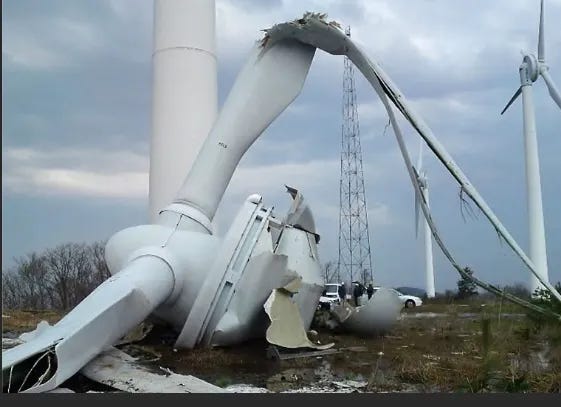
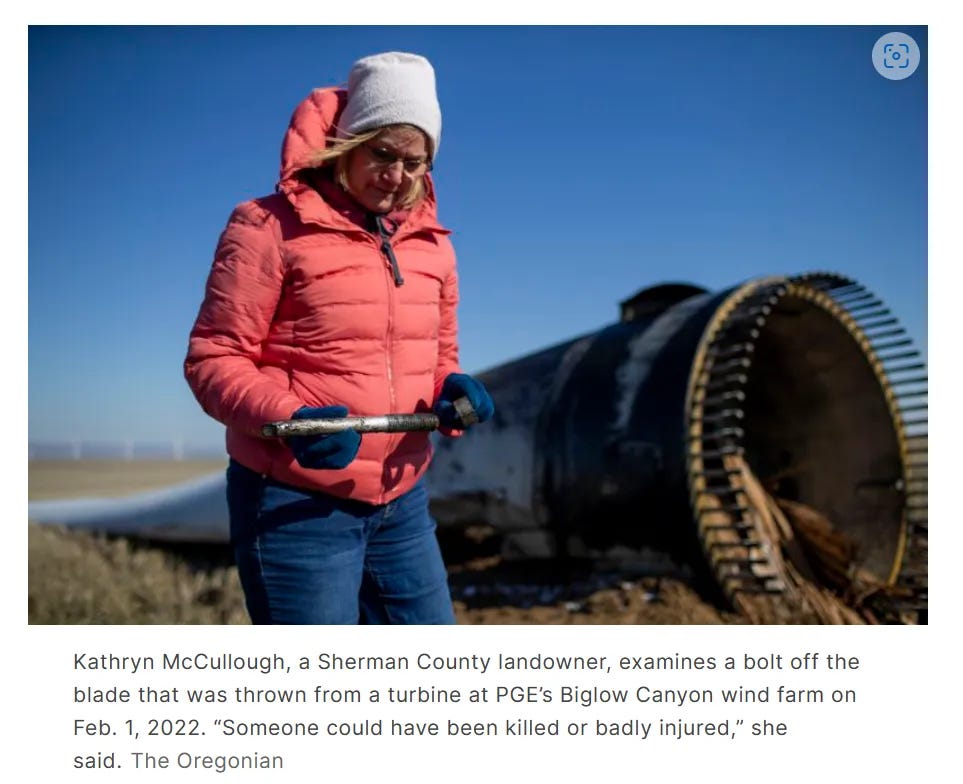

The green pushers never want facts like this to be revealed. It’s lunacy at the highest levels, masked by the climate change narrative.
This article is concise and informative!